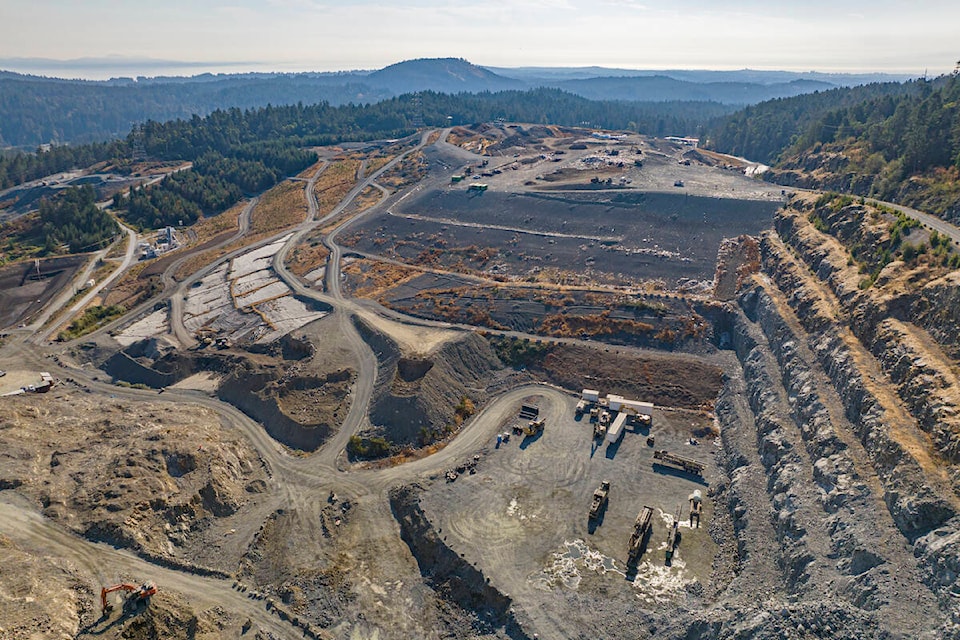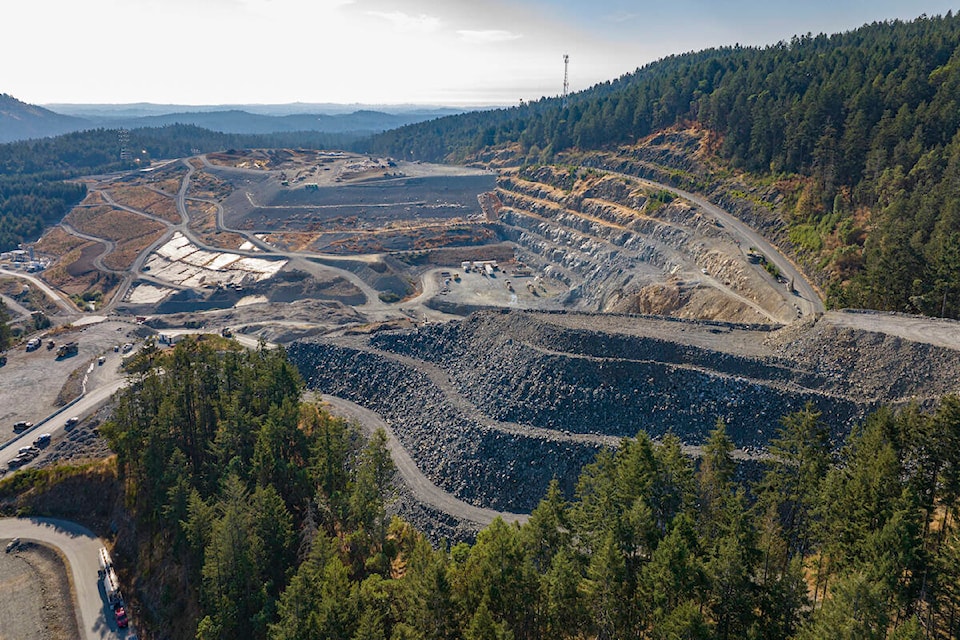The space currently taking in the Capital Regional District’s waste at Hartland landfill could be full by next October as nearly $11 million has been approved for preparing the site’s next phase.
The landfill area known as Cell 3 will reach capacity between October 2024 and January 2025. The CRD last month awarded a contractor $10,867,860 to prepare a new cell’s liner system, which prevents water containing remnants of garbage from leaving the landfill site.
The new cell is the first of three that will collect the region’s solid waste until around 2050. The transition to a new part of the landfill is another signal to the public that Hartland is a limited space with a limited ability to receive waste, said Russ Smith, senior manager of the CRD’s environmental resource management.
The region is trying to cut per capita waste by a third over the next decade, but Hartland will still reach capacity by 2100 despite that reduced disposal rate being met, Smith said in an interview. There isn’t anywhere else to put garbage after the landfill is full, he added.
“What it really comes down to, if we’re going to make the landfill last even longer, is people reducing their consumption, figuring out how to reuse stuff and beneficially using stuff that has come to the end of its life,” Smith said.
Cell 3 is filling up slightly ahead of schedule due to a recent uptick in waste as the pandemic caused people to allocate travel money toward home renovations or buying new things, Smith said. He cautioned that Cell 3’s end date is months, not years, off of the timeline envisioned in the CRD’s long-term waste plan.
The cell has absorbed the region’s waste since September 2016 and its successor, Cell 4, will see waste buried in a northern quadrant of the landfill property.
Smith compares the progression of Hartland to building the layers of a cake. The quarried-out mountain is gradually filled with trash and reinforced with gravel and other materials so it’s safe to operate on. Building out Cell 4 will also coincide with welcoming commercial traffic into the landfill from Willis Point Road instead of Hartland Avenue, Smith said.
Most people going to Hartland likely only see the drop-off site and not the quantity of waste going into the engineered landfill itself, the CRD official said.

The regional district hopes new technology will make inroads in processing waste into energy and other usable materials. But Smith said there currently isn’t anything like that commercially available, so the CRD’s immediate waste reduction action will rely on price signals.
Pending approval from the CRD board next month, bylaw updates will bring in new incentives for salvaging reusable products and for haulers to bring in separated waste material.
The changes will increase the general tipping fee rate to $150/tonne, while giving a $125/tonne rate for haulers that collect multiple streams of waste, starting Jan. 1. The looming updates will also ban clean wood from the landfill and see the CRD make good on its 2022 promise to charge an increased rate of $500/tonne for waste left by cruise ships.
A second phase of the changes coming July 1 would ban other types of wood, along with carpet and asphalt shingles. A $300/tonne fee will also be introduced on that date for loads of unsorted renovation and demolition materials that contain mandatory recyclables.
No charge for salvageable wood and reduced rates for clean and treated wood aim to incentivize keeping those items out of the trash, while those tipping fees will go toward recycling and reusing the products.
Tackling some of those big landfill contributors is supported by the Synergy Foundation, which promotes the circular economy. Jarret Klim, a program manager with the Victoria-based organization said it’s important for people, governments and businesses to rethink the current economy’s take-make-waste model.
That can be done by making products with recycled content from the beginning and designing them to be deconstructed and repurposed, Klim said.
Challenges remain as he said there’s not really a recycling market for the soon-to-be-banned carpet. Still, it’s encouraging to see more places pass deconstruction bylaws and to see the private sector, including demolition companies, pivot toward the salvaging practise, Klim said.
“Transitioning to a circular economy is really the answer and really everyone rethinking what waste means,” he said. “Is something truly at its end of life or just at its end of life to you.”
The Synergy Foundation aids businesses in reducing their environmental impact, including their waste. That includes helping them navigate an array of products on the market with labels like eco-friendly or biodegradable.
Klim said bioplastics can be harmful if they’re mixed in with compost, so he’d like to see more clear regulations for businesses. The federal government is in the midst of crafting new labelling rules and standards for products claiming to be recyclable or compostable.
Even if a business is only motivated by its bottom line, Klim said it’s still worthwhile for them to reduce waste.
“Tipping fees are going up, it’s expensive to haul waste, if you can reduce your waste from the beginning, it’s going to make good economic sense,” he said.
Cutting out waste is a complex problem, the CRD’s Smith said as he noted a huge part of the economy is dependent on consumption. As higher levels of government provide support by banning single-use items or helping find beneficial uses for waste, Smith said the CRD will continue to look into whether there are other ways to divert materials from Hartland.
“We need to figure out ways to make this landfill last forever.”
READ: CRD could explore making green bin collection mandatory in all communities
